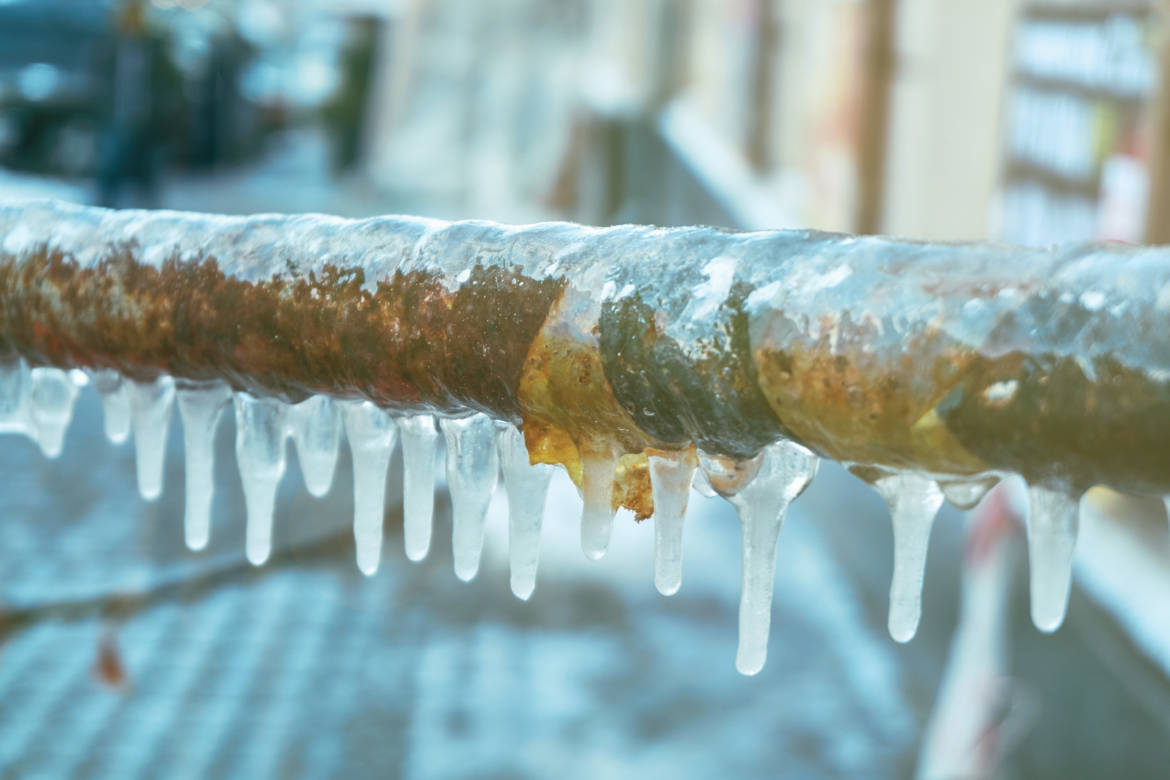Preventing Frozen Pipes in Cold Weather: Pro Tips
Preventing Frozen Pipes in Cold Weather: Pro Tips
Blog Article
Just how do you really feel when it comes to How to prepare your home plumbing for winter weather?
:strip_icc()/snow-outdoor-faucet-pipes-4af65d1e5e904fb1aa7bf74071fe5d89.jpg)
Winter can damage your plumbing, particularly by freezing pipes. Right here's exactly how to prevent it from happening and what to do if it does.
Intro
As temperature levels decrease, the risk of icy pipelines boosts, possibly causing costly repairs and water damages. Comprehending how to prevent frozen pipes is critical for property owners in chilly climates.
Comprehending Frozen Pipelines
What creates pipelines to freeze?
Pipes ice up when revealed to temperature levels below 32 ° F (0 ° C) for extended durations. As water inside the pipes freezes, it increases, taxing the pipe wall surfaces and potentially causing them to break.
Dangers and problems
Icy pipes can bring about water system disruptions, residential or commercial property damages, and costly fixings. Burst pipelines can flood homes and trigger comprehensive architectural damage.
Indications of Frozen Pipes
Determining icy pipelines early can prevent them from rupturing.
Just how to determine icy pipelines
Look for decreased water flow from taps, uncommon odors or noises from pipes, and noticeable frost on exposed pipes.
Avoidance Tips
Shielding prone pipes
Wrap pipelines in insulation sleeves or make use of warm tape to safeguard them from freezing temperatures. Concentrate on pipelines in unheated or exterior areas of the home.
Home heating methods
Keep indoor areas sufficiently heated, specifically areas with pipes. Open cabinet doors to enable warm air to circulate around pipelines under sinks.
Protecting Outside Plumbing
Garden hoses and exterior taps
Detach and drain pipes yard hoses prior to wintertime. Install frost-proof spigots or cover exterior faucets with protected caps.
What to Do If Your Pipelines Freeze
Immediate activities to take
If you think icy pipelines, keep faucets open to eliminate stress as the ice melts. Use a hairdryer or towels taken in warm water to thaw pipelines gradually.
Long-Term Solutions
Structural adjustments
Think about rerouting pipes far from exterior walls or unheated areas. Add extra insulation to attics, basements, and crawl spaces.
Upgrading insulation
Invest in premium insulation for pipes, attics, and walls. Proper insulation helps keep regular temperature levels and minimizes the danger of frozen pipes.
Conclusion
Preventing icy pipelines needs proactive steps and quick feedbacks. By recognizing the causes, signs, and safety nets, house owners can safeguard their pipes throughout cold weather.
5 Ways to Prevent Frozen Pipes
Drain Outdoor Faucets and Disconnect Hoses
First, close the shut-off valve that controls the flow of water in the pipe to your outdoor faucet. Then, head outside to disconnect and drain your hose and open the outdoor faucet to allow the water to completely drain out of the line. Turn off the faucet when done. Finally, head back to the shut-off valve and drain the remaining water inside the pipe into a bucket or container. Additionally, if you have a home irrigation system, you should consider hiring an expert to clear the system of water each year.
Insulate Pipes
One of the best and most cost-effective methods for preventing frozen water pipes is to wrap your pipes with insulation. This is especially important for areas in your home that aren’t exposed to heat, such as an attic. We suggest using foam sleeves, which can typically be found at your local hardware store.
Keep Heat Running at 65
Your pipes are located inside your walls, and the temperature there is much colder than the rest of the house. To prevent your pipes from freezing, The Insurance Information Institute suggests that you keep your home heated to at least 65 degrees, even when traveling. You may want to invest in smart devices that can keep an eye on the temperature in your home while you’re away.
Leave Water Dripping
Moving water — even a small trickle — can prevent ice from forming inside your pipes. When freezing temps are imminent, start a drip of water from all faucets that serve exposed pipes. Leaving a few faucets running will also help relieve pressure inside the pipes and help prevent a rupture if the water inside freezes.
Open Cupboard Doors
Warm your kitchen and bathroom pipes by opening cupboards and vanities. You should also leave your interior doors ajar to help warm air circulate evenly throughout your home.

We had been introduced to that report about Prevent Frozen Pipes from a buddy on our other blog. Be sure to take the opportunity to share this write-up if you enjoyed it. Thanks so much for going through it.
At This Website Report this page